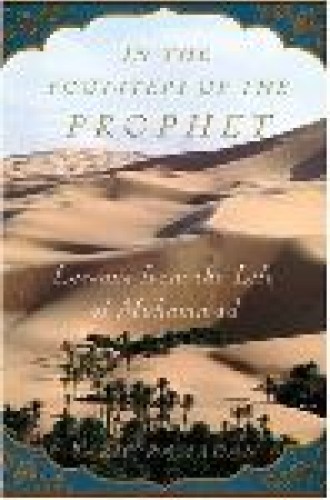In the Footsteps of the Prophet
Tariq Ramadan’s life as public intellectual and leader among European Muslims has been dramatic. Looming in his personal background is his grandfather, Hasan al-Banna, who was the founder in 1928 of Egypt’s most famous Islamist group, the Muslim Brotherhood. In and out of the political process over the decades, the Brotherhood has remained committed to a vision in which Egyptian civil society is subordinated to Islamic religious principles and legal precepts. The Brotherhood produced the single most important modern Islamic fundamentalist thinker, Sayyid Qutb, who was hanged by the Egyptian state in 1966.
Into this environment of radicalism and confrontation Ramadan was born, yet he spent much of his youth and schooling years in Europe. In the most dramatic change in his life he turned away from his Islamist inheritance, replacing it with a commitment to the Muslim communities living not in the Middle East but the West.
Ramadan is a new kind of Muslim leader—one who has credentials in classical Islamic scholarship but who also takes seriously the question of the future of Muslims in Western societies. This last issue has normally been avoided by mainstream community leaders and has all but been ignored by the minority extremists who are blinded by their commitment to a clash of civilizations. Ramadan’s message at heart is something like this: Muslims in Europe and North America should embrace their Islamic identity (along with its traditional ethical, legal and theological foundations) and also be fully participant citizens in the countries in which they now live. In fact the former necessitates the latter.
Conservative in some ways, this perspective calls for change by Muslims in the West, but it also searches for authentically Islamic ways to engage with the non-Islamic world. The implications are significant for American and European Muslims, especially in light of the advancing agenda of many Islamists who increasingly court young Western Muslims. Ramadan has joined this fray, opposing the worst elements of his grandfather’s ideology. However, he has decided to fight the fundamentalists not in Egypt but in the West.
In the Footsteps of the Prophet is best understood in this context of community and ideology. It was inspired by a failed film project of the same name—a project that eventually saw the author banned from various Arab countries. Since any narrative presentation of Muhammad’s life—which is exemplary to all Muslims—is in effect the assertion of a legal and doctrinal viewpoint, the subject is inevitably a charged one. Modern treatments of the Prophet’s life have often been targets of heated criticism; thus few writers turn to the topic, and even fewer venture anything new in the telling.
Like its author, Ramadan’s book is at once traditional and modern. It follows a well-beaten path, presenting the classic biography or sira of Muhammad, yet it frequently stops along the way to draw lessons relevant to the concerns of today’s Muslims. The chapters are devoted to the Prophet’s birth, his childhood education, his commission as a prophet, resistance to his message, his leadership of the early community, his eventual triumph and finally his death.
The book’s significance is not in its treatment of literary sources that might shed new light on a “historical Muhammad,” but rather in what Ramadan makes of the familiar biography of Muhammad. The ethical, legal and theological lessons to be drawn are Ramadan’s primary concern. As a conclusion to his treatment of Muhammad’s childhood, Ramadan underlines the need for a moral training of youth not based on interdiction and sanction. In treating various instances of Muhammad’s exposure to the traditions of Jewish and Christian Arabs, Ramadan emphasizes the need for Muslims to find common ethical ground with other faith communities. Tolerance of other monotheistic traditions is underlined by a story in which Muhammad allows Christian visitors to pray in his mosque. Principles of democracy and the preservation of the natural environment are recovered too. One episode, in which the Prophet’s daughter Zaynab enters a mosque to make a petition, is pointed to as evidence of Muhammad’s approval of women as autonomous actors in the public sphere. A lesson on respect for personal freedom focuses on the example of an early Muslim in Ethiopia being allowed to convert to Christianity without sanction from the Prophet.
In seeking out ethical lessons to be learned, Ramadan does shy away from the difficult episode of the Prophet’s treatment of the Bani Qurayza, a Jewish clan in Medina, whose male members were executed for betraying the Muslims during their armed struggle with the polytheists of Mecca. The traditional scholar in Ramadan wants to emphasize the traitorous behavior—which in such a time of armed conflict, he feels, required direct action—while the progressive theologian in him is eager to move on to less difficult terrain.
For the non-Muslim reader the book offers a window onto a classic Islamic theme, while at the same time wrestling with urgent contemporary issues. The book will also be welcomed among thoughtful Muslims, both in the West and the Islamic world, as an articulate progressive reading of a very traditional story. For Ramadan such a balancing act is quite familiar, and from his perspective it is essential to the future of Muslim communities in the West.





